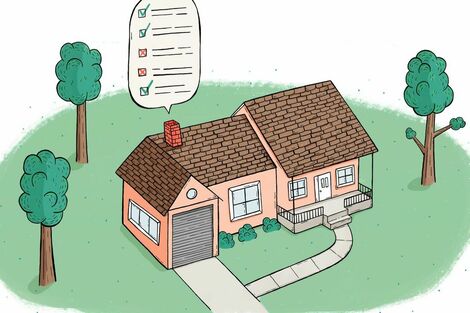|
27/2/2019 1 Comment walk-thru inspectionAlthough architectural details, wall and floor coverings, modern conveniences and many other factors are important in the buying decision, the focus of this home inspection is on the structural and mechanical condition of the property. The inspection is designed to give the real estate agent or prospective purchaser a system to detect some of the readily accessible major flaws or deficiencies in the significant components and systems of a home. It is not designed to, nor does it profess to facilitate detection of all flaws, problems or occurances that might exist in any given home. To maximize time efficiency and to ensure all of the major sections of the home are take into consideration, we have developed a systemized approach to inspections. This is a simplified overview of the same system the professional home inspectors use when they are inspecting a home. To assist you in following the system, we have provided a checklist that will guide you through your own inspection. THE BIG PICTURE The first step in inspecting a home is to examine the big picture for the home. Notice the area the home is located in. Are there other homes of similar age and construction details relative to the home you are inspecting? A comparison will give you a general idea of the upkeep of the home. Have there been significant modifications to the exterior of the building and if so, how is the workmanship? EXTERIOR Start at the exterior front of the house and work your way around the house (clockwise or counter-clockwise) at a distance which allows you to view a complete face comfortably. On each face (front, sides, rear) start your visual inspection at the top of the structure and work your way down to the ground and lot area. As an example, you would start at the front and note the roof and chimneys, the gutters, fascia and soffits. Then, moving down the exterior wall coverings (brick, wood, aluminum), noting windows, doors, etc. Examine any porches or decks down to the foundation, then the grade or slope of the lot area, followed by any coverings, such as flower beds, walkways, interlocking brick, driveways, etc. Move closer to the house, to examine more closely any details which may have attracted your attention, without skipping any items. Having completed the front, move to the side of the house and start the same procedure (roof to ground). INTERIOR At the interior, begin your inspection either at the top or bottom of the house, and then follow the system throughout each floor in the house. The system for inspecting the interior is to begin with the floor, go to the walls and then the ceiling, and then consider any appliances or other things in the room. Move from room to room, always in the same direction (clockwise or counter-clockwise) so as to not miss any areas. If you see a door, open it! In the utility room, first notice the floor, the walls (possibly the foundation walls are visible here) then the ceiling (floor joists may be visible), then go to the furnace, hot water heater, electrical panel, plumbing system, etc. When inspecting the floors, walls and ceilings, scan the entire area that is visible, not just one section. In a finished room you would notice the floors, walls (including windows) and ceiling. Next look for the heat sources, electrical outlets and switches, fireplaces, closets etc. In bathroom or kitchen, notice the floor, walls and ceiling, then the plumbing fixtures. CONDITION While performing the inspection, whether at the exterior, the interior or one of the mechanical systems, note the system first, then its relative condition. For example, if you were inspecting a wall on the interior of the home you would first note that the wall is plaster, and then examine the wall for cracks and irregularities. The following are some typical problems or occurances to look for in the major components and systems of the home: ROOF
CHIMNEYS
SOFFIT AND FASCIA
GUTTERS AND DOWNSPOUTS
EXTERIOR CLADDING
WINDOWS AND DOORS
PORCHES AND DECKS
FOUNDATIONS
LOT AREA
BASEMENT
FLOORS
WALLS
CEILINGS
BATHROOMS AND KITCHENS
ELECTRO-MECHANICAL CONSIDERATIONS
WATER WELLS AND SEPTIC SYSTEMS
THE OTHER STUFF (that you might need a home inspector for...)
1 Comment
|
AuthorGil Strachan is a professional home inspector, representing Electrospec Home Inspection Services in east-central Ontario since 1994. CategoriesAll Appliances Buying And Selling Cooling Electrical Environmental Exterior Health And Safety Heating Home Improvement Home Inspection Insulation Insurance Interior Plumbing Roofing Special Structure Archives
January 2024
|


